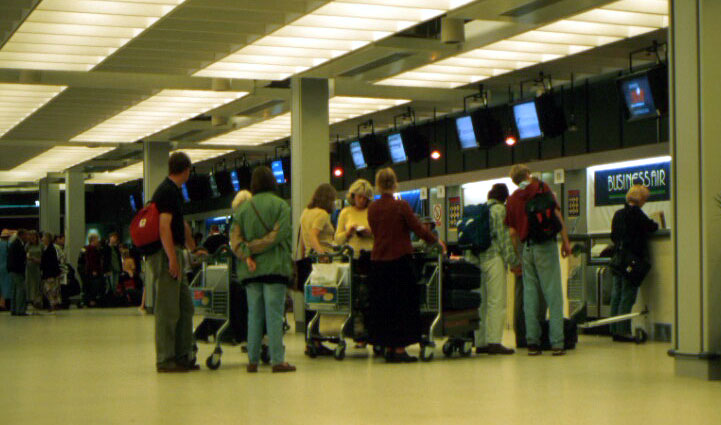critiques
Here are a few representative critiques:
All the world's a thoroughfare, it can sometimes seem these days, and cyberspace has only made literal what has long been implicit on a metaphorical level: We pray and eat and work and woo in spaces that belong to nowhere. . . . The city of my parents' age was a stationary place of monuments; the one of our children's time will be more like a moving walkway, a mobile atrium or an airport writ large, in which everyone -- and everything -- is neither here nor there. (Iyer 1999, 83-4)

The public sphere, consisting of squares, streets, the press, and public opinion, has been eviscerated by the market tactics of advertising and underwriting, the image of the city has . . . been sundered into self-contained, artificially constructed 'zones' that repetitively circulate identical messages, drawing the public together as global consumers of products, places, and images. (Boyer 1996, 149)
The consumerist philosophy undergirding the mall . . . creates safe, sanitized spaces where people can experience the thrill of the different without taking any risks; where entertainment can pass as learning; where community can be synthesized in a manner that offers some of its benefits and none of its costs; where the boundaries between the vicarious and the real are blurred; and where, every step of the way, people are treated exclusively as spectators and shoppers who consume entertainment, information and goods without knowing where one ends and the next begins. (Barber 2001)
The generation that grew up in suburbia appears to hold no nostalgia# for the old New York; these people prefer the suburbs, where they are surrounded by like-minded people and provided with the type of security they have known since childhood. . . . [They are caught in] wasteful and increasingly untenable dreams of single family homes, suburban isolation, and shopping malls, all of which depend on the automobile and highway systems . . . [and are] to be blamed for the city's disappearance. (Boyer 1996, 151-53)
The general lines of critique are clear. No matter whether they are aesthetically pleasing are not, contemporary places are thin as opposed to thick; they offer simplified identities to simplified inhabitants. The places are either commodities, spectacles, or machines for a standardized consumerist routine that pales in comparison to thicker modes of living. This superficial life is not our individual fault. It is due to large forces, perhaps global capitalism, perhaps technologies such as the automobile and the media, perhaps modernization as an inevitable loss of roots.
Index
Places today outline
(c) David Kolb, 1 August 2001
